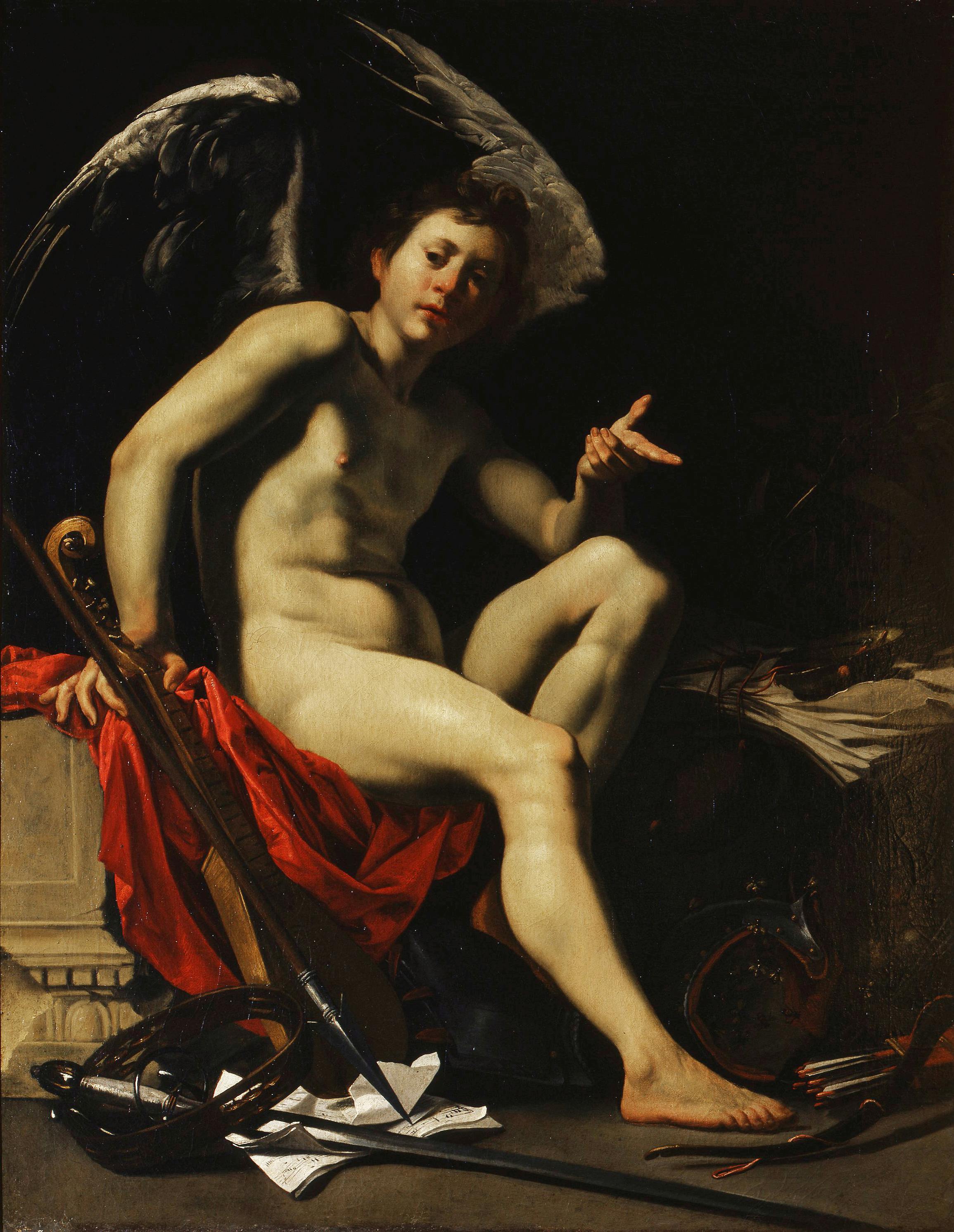Amor Vincit Omnia
Orazio Riminaldi (Pisa 1593-1630)
This canvas was part of the collection belonging to Ferdinando de' Medici, Grand Prince of Tuscany, and perhaps comes from the group of works that remained in the possession of the artist’s brother after his death. The subject of the painting is usually described as “Love winning over the arts”, but in the Medici inventories of the late 17th century, it is entered as “Love ruler of all” or “The Talent of virtue''. The Virgilian concept of Omnia vincit amor at the base of this painting had an illustrious predecessor in the same subject, painted for Marchese Vincenzo Giustiniani by Caravaggio. Together with the usual attributes of bow and arrows, the figure of Amor, the Roman Cupid, is surrounded by a series of items that refer to art, science, literary fame, weaponry and earthly powers which, as well as composing elegant examples of still life, are also an exhortation not to give in to passion but to practise the arts and other human activities (the gesture of Cupid’s hand is important here) in order to achieve harmony. In terms of its composition and Cupid’s pose in particular, the inspiration that comes from some of Caravaggio’s figures blends with that of ancient statues and, in particular, with the Ludovisi Ares. However, the Caravaggism of RIminaldi’s initial years in Rome is here left behind as the artist follows the classicism of French artist Vouet, in terms of the perfect compositional arrangement and for the superb, obvious beauty shown by the ephebe.
